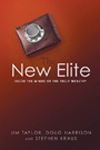History has cycled back and forth regarding public views of the wealthy. In some eras they are vilified and demonized, in others they are worshiped or are viewed as having special powers (higher intelligence, better judgement, etc). The current atmosphere is no exception – with policy pronouncements and media depictions titling towards demonizing the wealthy. However, by and large the public seems very poorly informed regarding the realities of wealth in America today.
If you’re looking for an accurate, factually based picture of America’s high net worth population, check out Taylor, Harrison and Krause’s The New Elite: Inside the Minds of the Truly Wealthy. Their data is based on a series of surveys totaling over interviews of 6,000 affluent persons (average income $430,000). Their main findings are:
1. There has been an explosion in the number of wealthy. Having net worth of $1 million isn’t enough any more, you need at least $5 million to achieve real wealth.
2. The wealthy are married, and avoid luxury items. Fully 83% of the wealthy are married and 48% consider luxury items to be a waste of money.
3. The wealthy are largely self made. About 36% grew up in either poverty or lower middle class circumstances. Large percentages say they believe in hard work, in school and later.
4. The wealthy are mostly interested in quality craftsmanship and service, not “luxury” goods which display their wealth and status.
5. Many wealthy say they practice “stealth wealth”, that is they don’t show their money.
6. As communications technology has increased, their investments and interests have tended to become more global.
7. Contemporary millionaires get their wealth from a number of sources:
– Their Own Business: 39%
– Someone Else’s Business: 36%
– Financial Investments: 16%
– Real Estate: 13%
– Inheritance: 4%
– Other: 2%
All in all, The New Elite: Inside the Minds of the Truly Wealthy offers a compelling picture that you won’t get from traditional media or political pundits.
For more on this check out our other postings on this topic:
Eighty Five People Own Half the World’s Wealth




Yeah, this is a compelling look at what you won’t get if you go to the traditional media. And if you’re looking for a compelling look into a calculated, skewed, demonstrably contorted “study” to paint a very particular picture, then this book is for you.
“Let’s find a small sample size of “wealthy”.. What’s wealthy mean? Well, we’re going to define wealthy in such a way to eliminate segments of the uber-wealthy which isn’t conducive to our narrative. What is our narrative? that if you’re not rich, it’s because you’re stupid, wasteful or lazy and you keep blaming everyone else for not being rich like you totally could be if you weren’t such a whiny liberal minority. We’ll exclude the super-wealthy and use a selection method which tends to find the types of people we want. It’s not going to be easy, but in the end, we’ll have a book which shows the wealthy to be hard-working sweethearts who balk at luxury items (although luxury items which the middle class and poor cannot afford are skyrocketing and remain solid sellers even through downturns in the economy) and think that what this country needs is to roll up their sleeves and get to work. Then, once we’ve tied up our carefully contrived study we’ll bill it as an honest look into the “wealthy” (although we’ll deliberately play down our narrow determination of what that is, our relatively small sample size and what our past contentions have been) which goes against what the big bad media says when a tiny portion of it suggests there is a growing inequality gap and that opportunity is not “equal.””
Success!
In other words, out of 800 families which contained disadvantaged hard working people within a certain wealth category, 800 families were disadvantaged hard working people within a certain wealth category! :-)
Jane,
You have a great point. The major issue that methodologists run into is, if you take a random sample of the U.S. population you typically don’t get enough wealthy to study. So that means that you are basically left with non-probabilistic snowball sampling methods. That said, its still important for people who are interested in building wealth to learn how to become wealthy, so even research which is flawed is better than whats publicly available in the media – which is often polemical and therefore not so useful.
Also, Taylor et al’s main findings – that most wealthy are married – also jives with what writers like Stanley and Danko (of Millionaire Next Door fame) say. So the fact that there is some concurrent validity suggests Taylor and company’s findings aren’t all that off base.
Best,
James